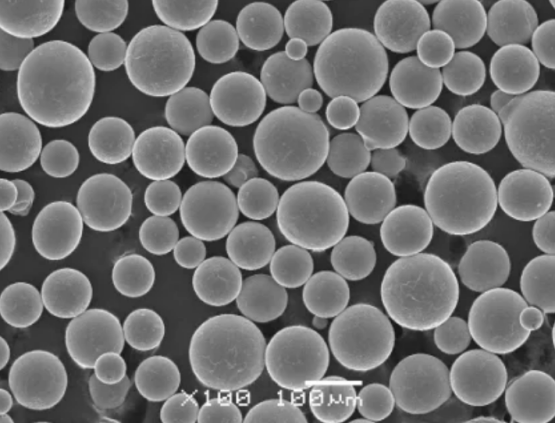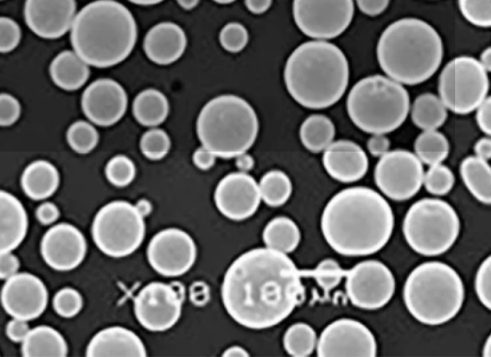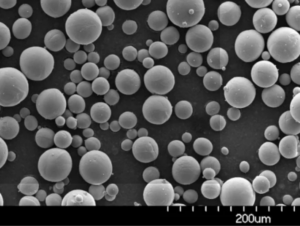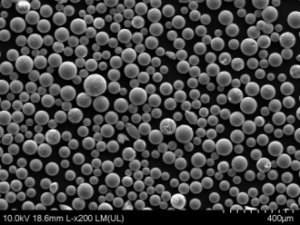3d baskı inconel 625 mükemmel yüksek sıcaklık dayanımı ve korozyon direncine sahip bir nikel-krom-molibden alaşımıdır. Bu, onu zorlu uygulamalar için karmaşık geometrilerin 3D baskısı için çok uygun hale getirir. Bu kılavuz, 3D baskılı Inconel 625'in bileşimi, özellikleri, parametreleri ve kullanımları hakkında genel bir bakış sağlar.
3d baskı inconel 625'e giriş
Inconel 625, havacılık, denizcilik, nükleer ve kimya endüstrilerinde katkılı üretim için sıklıkla kullanılan yüksek performanslı bir süper alaşımdır. Temel özellikleri şunlardır:
Tablo 1: 3D baskılı Inconel 625 malzemesine genel bakış
| Mülkler | Detaylar |
|---|---|
| Nikel İçeriği | 58-63% |
| Yüksek Mukavemet | Çekme mukavemeti 1,310 MPa |
| Sıcaklık Dayanımı | 1.400°F veya 760°C'ye kadar |
| Korozyon Direnci | Isıya, asitlere, alkalinlere karşı yüksek direnç |
| Çatlak Direnci | Mükemmel yorulma dayanımı ve tokluk |
| İşlenebilirlik | Birleştirme için kolayca kaynaklanabilir |
| Yaygın Kullanımlar | Havacılık, denizcilik, endüstriyel uygulamalar |
3D baskı, geleneksel yöntemlerle ulaşılamayan karmaşık Inconel 625 parçalarının üretilmesini sağlar. Bileşim, özellikler, baskı işlemi parametreleri, uygulamalar ve daha fazlası hakkında ayrıntılar için okumaya devam edin.

3d baskı inconel 625'in Kimyasal Bileşimi
Inconel 625 alaşım kimyası nikel, krom, molibden, niyobyum ve demir içerir:
Tablo 2: Inconel 625 alaşım bileşimi
| Element | Ağırlık % |
|---|---|
| Nikel (Ni) | 58.0 – 63.0 % |
| Krom (Cr) | 20.0 – 23.0 % |
| Molibden (Mo) | 8.0 – 10.0 % |
| Niyobyum (Nb) | 3.15 – 4.15 % |
| Demir (Fe) | Kalan |
| Karbon (C) | ≤ 0.10% |
| Manganez (Mn) | ≤ 0.50% |
| Silisyum (Si) | ≤ 0.50% |
| Fosfor (P) | ≤ 0.015% |
| Kükürt (S) | ≤ 0.015% |
| Alüminyum (Al) | ≤ 0.40% |
| Titanyum (Ti) | ≤ 0.40% |
| Kobalt (Co) | ≤ 1.0% |
Dikkatlice optimize edilmiş bu nikel-krom matrisi, sünekliği, yorulma mukavemetini ve kaynaklanabilirliği korurken, ısı ve korozyon direncinin olağanüstü bir kombinasyonunu sağlar.
3D Baskılı Inconel 625'in Mekanik Özellikleri
Inconel 625'in mekanik özellikleri onu zorlu uygulamalar için uygun hale getirir:
Tablo 3: Inconel 625 mekanik özellikleri
| Mülkiyet | Değer |
|---|---|
| Yoğunluk | 8.44 g/cm3 |
| Erime Noktası | 2.300-2.460°F (1.260-1.350°C) |
| Çekme Dayanımı | 125.000 – 240.000 psi |
| Akma Dayanımı (tavlanmış) | 110.000 psi min |
| Uzama | minimum |
| Young’s Modülü | 29 x 10^6 psi |
| Poission’s Oranı | 0.29 |
| Yorulma Dayanımı | 110 – 129 ksi |
| Kırılma Tokluğu | 200 ksi√in |
| Sertlik | ~35 HRC |
Mukavemet, çatlama direnci, termal özellikler ve korozyon direncinin kombinasyonu Inconel 625'in aşırı ortamlara dayanmasını sağlar.
Inconel 625'in 3D Baskı için Temel Faydaları
3D baskılı Inconel 625 önemli avantajlar sunar:
Tablo 4: Avantajları 3D baskı Inconel 625 parçalar
| Avantajlar | Açıklama |
|---|---|
| Yüksek mukavemet/ağırlık oranı | Çelik kadar güçlüdür ancak ağırlığı daha azdır, maliyet tasarrufu sağlar |
| Aşırı sıcaklıklara dayanıklıdır | Kriyojenikten 1.400°F'ye kadar mekanik özelliklerini korur |
| Korozyon direnci | Asitlere ve 1.400°F'ye kadar alkali çözeltilere karşı mükemmel kimyasal direnç |
| Çatlak direnci | Yüksek yorulma mukavemeti kırılma hatalarına karşı dirençlidir |
| Termal kararlılık | Düşük termal genleşme katsayısı bozulmayı önler |
| Gıda güvenliği | Sızıntı yapmayan gıda işleme ekipmanları için onaylanmıştır |
| Özel alaşımlar | Uygulama gereksinimleri için kimyayı özelleştirebilir |
| Karmaşık geometriler | Fabrikasyon ile ulaşılamayan karmaşık şekilleri yazdırın |
| Konsolide montajlar | Karmaşık montajları kaynak yapmadan basarak maliyetleri düşürün |
| Hızlı yineleme | Hızlı prototipler aracılığıyla parçaları tasarlayın, test edin, uyarlayın |
Bu avantajlar tasarım olanaklarını genişletir ve daha hafif, daha güçlü ve daha uzun ömürlü bileşenler sağlar.
Inconel 625 için Önerilen 3D Baskı Parametreleri
Inconel 625 parçalarını lazer toz yatağı füzyonu ve yönlendirilmiş enerji biriktirme sistemlerinde basarken kullanılan tipik proses parametreleri aşağıda verilmiştir:
Tablo 5: Inconel 625 standart 3D baskı parametreleri
| Parametre | Tipik değer |
|---|---|
| Katman kalınlığı | 20 – 100 mikron |
| Lazer gücü | 500 W'a kadar |
| Tarama hızı | 800 – 1200 mm/s |
| Işın çapı | 50 – 200 mikron |
| Toz boyutu | 15 – 45 mikron |
| Baskı yönü | 45° açılar |
| Destek yapıları | Zorunlu |
| Tavlama | İsteğe bağlı 2,100 – 2 saat için 2,300°F |
Ayarlar, yoğunluğu artık gerilmelere karşı dengelemelidir. ASTM F3056 gibi yerleşik yöntemlerin izlenmesi çatlama ve bozulmaları en aza indirir. Şimdi yaygın uygulamalara bakalım.
3D Baskılı Inconel 625 Parçalarının Uygulamaları
Eklemeli olarak üretilen Inconel 625'in endüstrilerdeki yaygın kullanım alanları şunlardır:
Tablo 6: Inconel 625 3D baskı uygulamaları
| Endüstri | Uygulamalar | Bileşenler |
|---|---|---|
| Havacılık ve Uzay | Yapısal braketler, motor bileşenleri, hidrolik sistemler | Türbin kanatları, roket nozulları, egzoz manifoldları, yakıt elemanları |
| Petrol ve gaz | Kuyu içi aletler, vanalar, kuyu başı sistemleri | Matkap uçları, kablo hattı araçları, Noel ağaçları |
| Otomotiv | Turboşarjlar, egzoz bileşenleri | Manifold, süperşarj rotor muhafazası, turbo pervaneleri |
| Kimyasal işleme | Isı eşanjörleri, reaksiyon kapları, boru bağlantı parçaları | Boru makaraları ve dirsekleri, karıştırma bıçakları, proses ekipmanları |
| Gıda ve eczacılık | Mikserler, kurutucular, ısıtıcılar, konveyörler | Rulmanlar, şaftlar, bağlantı elemanları, konektörler |
| Denizcilik | Tahrik bileşenleri, tuzdan arındırma sistemleri | Pompalar, çarklar, kaplinler, valfler |
| Enerji üretimi | Isı eşanjörleri, buhar sistemi bileşenleri | Başlıklar, kızdırıcı boruları, kondenser boruları |
3D baskı, zorlu uygulamalarda karmaşık montajları birleştiren daha hafif, daha güçlü ve özel Inconel 625 parçalarını mümkün kılarak kritik sistemlerde benimsenmesini sağlar.

Inconel 625 3D Baskı için Malzeme Seçenekleri
Katmanlı üretim için popüler Inconel 625 alaşım seçenekleri şunlardır:
Tablo 7: Ortak 3D baskı Inconel 625 malzeme formatları
| Tip | Açıklama | Anahtar Özellikler |
|---|---|---|
| Inconel 625 Standart | Katkı maddesi için en yaygın kullanılan kalite | Çekme mukavemeti 1050 MPa, kopma mukavemeti 980°C'de 760 MPa |
| Inconel 625 Ultra | Daha yüksek yoğunluk ve süneklik | 30 artırılmış akma ve çekme dayanımı |
| Inconel 718 | Isıya dayanıklı havacılık sınıfı | Mükemmel mukavemet ve sertlik >540°C |
| Özel 625 alaşımlar | Uygulamaya özel özel kimya | Geliştirilmiş emisivite, iletkenlik, manyetizma vb |
Özel Inconel tozları, 3D baskı başarısını artırmak için partikül şeklini, boyutunu ve kimyasını optimize eder.
Inconel 625 3D Baskı Standartları
3D baskılı Inconel 625 parçalarının ve tozlarının kalifikasyonu için temel standartlar:
Tablo 8: Inconel 625 alaşım 3D baskı standartları
| Standart | Açıklama |
|---|---|
| ASTM F3056 | Katmanlı üretim nikel alaşımı için standart şartname |
| ASTM B946 | Kusurların tespiti için standart |
| AMS 2801 | Nikel alaşımlarının ısıl işlemi |
| AMS 5662 | Lazer toz yatağı füzyon prosesi gereksinimleri |
| ISO/ASTM 52900 | Tasarım ve üretim için genel ilkeler |
Baskılı Inconel bileşenlerinin bu spesifikasyonlara göre sertifikalandırılması, hizmet için yüksek kalite ve güvenilirlik sağlar.
3D Baskı için Inconel 625 Tedarikçileri
Inconel 625 metal tozlarının önde gelen tedarikçileri şunlardır:
Tablo 9: Inconel 625 toz tedarikçileri
| Tedarikçi | Açıklama | Fiyatlandırma |
|---|---|---|
| LPW Teknoloji | Geniş alaşım aralığı, özel partikül optimizasyonu | $$$ |
| Sandvik Osprey | Standart ve özel nikel alaşımlı tozlar | $$$ |
| Erasteel | Geniş süper alaşım malzeme portföyü | $$ |
| AMG Superalloys İngiltere | Nikel alaşımlarında uzmanlaşın | $-$$ |
| Tekna | Gelişmiş plazma sferoidizasyon süreci | $$$ |
Bu birinci sınıf alaşım uzmanları, baskı başarısını sağlamak için Inconel 625 partikül boyutu, şekli, kimyası ve kusurları üzerinde ince ayar yapmaktadır.
3D Baskılı Inconel 625'in Artıları ve Eksileri
Tablo 10: Inconel 625 3D baskının avantajları ve sınırlamaları
| Artıları | Eksiler |
|---|---|
| 1800°F sıcaklık değişimlerine dayanıklıdır | Çelik veya alüminyumdan daha maliyetlidir |
| Çelikten beş kat daha fazla kırılma direnci | Gerilmeleri azaltmak için ısıl işlem gerektirir |
| Çeliğin yarı yoğunluğu | Optimizasyon olmadan mikro çatlamaya duyarlı |
| Sıcak korozyona ve çukurlaşmaya karşı dayanıklıdır | Destek gerektiren çıkıntıları basmak zor |
| Gıda ve tıbbi kullanımlar için biyo-uyumlu | Sınırlı sayıda büyük ölçekli tedarikçi ve yazıcı |
| Montajları birleştirerek karmaşık geometrileri yazdırın | İşlem sonrası zorlayıcı olabilir |
Sağlam süreç uygulamalarıyla, 3D baskılı Inconel 625'in muazzam performans avantajları, daha yüksek parça maliyetlerinden daha ağır basar.
SSS
S: Inconel 625 basılırken çatlamaya ne sebep olur?
C: Büyük termal gradyanlardan kaynaklanan yüksek soğutma gerilimleri çatlamaya neden olur. Uygun destek yapıları, optimize edilmiş proses ayarları, ön/son ısıl işlem ve işleme kabartmalarının tümü çatlamayı en aza indirmeye yardımcı olur.
S: 3D baskılı Inconel 625 ısıl işlem gerektirir mi?
C: İsteğe bağlı ısıl işlem, iç gerilimleri azaltarak mekanik özellikleri ve çatlama direncini artırır. Kesit kalınlığına bağlı olarak 1900-2100°F'de 1-3 saat tavlama tipiktir.
S: As-baskılı Inconel 625 parçalarında hangi yüzey kalitesi beklenebilir?
C: Ham yüzey kalitesi, baskı parametrelerine bağlı olarak 250-500 mikron Ra arasında değişir. Ek işleme, taşlama, parlatma veya elektro parlatma yüzey kalitesi gereksinimlerini artırabilir.
S: 3D baskılı Inconel 625'i kaynaklayabilir misiniz?
C: Evet, Inconel 625, 3D baskılı montajları birleştirmek veya bileşenleri değiştirmek için GTAW, elektron ışını veya lazer kaynak yöntemleri kullanılarak kolayca kaynaklanabilir. Bozulmaları önlemek için uygun fikstürleme kritik önem taşır.
daha fazla 3D baskı süreci öğrenin
Additional FAQs on 3D Printing Inconel 625
1) What powder specifications matter most for 3D Printing Inconel 625?
Aim for spherical gas-atomized IN625 with PSD D10–D90 ≈ 15–45 μm, low interstitials (O ≤0.03–0.06 wt%, N ≤0.02 wt%, H ≤10 ppm), and minimal satellites. Consistent flow (Hall flow) and tap density support stable recoating and high density.
2) Which heat treatments are commonly used after LPBF IN625?
Stress relief: 870–980°C for 1–2 h in vacuum/argon.
Solution/anneal: 980–1150°C followed by rapid cool to restore ductility and corrosion resistance. HIP is often applied first (e.g., 1150–1200°C, 100–170 MPa, 2–4 h, inert) to close porosity.
3) How can I reduce cracking and distortion in 3D Printing Inconel 625?
Use platform preheat (≥80–200°C), thin layers (20–40 μm), optimized hatch and contour strategies, adequate supports, reduced downskin energy, and balanced scan rotations. Apply HIP and proper stress relief. Keep oxygen low in the build chamber.
4) What corrosion environments justify choosing IN625 over stainless steels?
Hot chlorides, seawater crevice conditions, sour service (H2S/CO2), oxidizing and reducing acids, and high-temperature salt exposure. IN625’s Cr–Mo–Nb chemistry provides superior pitting and crevice corrosion resistance versus 316L/904L.
5) What nondestructive evaluation (NDE) methods suit printed IN625?
X-ray CT for internal porosity/lack-of-fusion, dye penetrant for surface-breaking flaws, and eddy current or ultrasonic testing for near-surface/subsurface indications. Correlate in-situ monitoring with CT to reduce inspection load where permitted.
2025 Industry Trends for 3D Printing Inconel 625
- Multi-laser LPBF standardization: 8–12 laser systems with coordinated tiling cut cycle times 20–40% for IN625 brackets and heat exchangers.
- In-situ quality acceptance: Melt pool and coaxial imaging linked to part acceptance for defined geometries, reducing CT volume in production.
- Post-processing playbooks: HIP + targeted anneal recipes standardized for aerospace and energy, improving fatigue life and corrosion performance.
- L-PBF to DED hybrid repairs: IN625 DED used for turbine component repairs with digital twins for bead geometry control.
- Sustainability: Argon recirculation, powder genealogy, and higher recycled Ni content in powder supply chains.
| 2025 Metric (IN625 AM) | Typical Range/Value | Why it matters | Kaynak |
|---|---|---|---|
| LPBF relative density (post-HIP) | 99.6–99.95% | Aerospace-grade integrity | Peer-reviewed AM studies; OEM notes |
| High-cycle fatigue (machined, HIP) | 250–450 MPa at 10^7 cycles | Qualification for rotating/pressure hardware | Journal datasets; ASTM E466 |
| Build rate (12‑laser LPBF, 40 μm layers) | 35–70 cm³/h per system | Cost per part reduction | OEM application notes |
| Oxygen in AM-grade powder | ≤0.03–0.06 wt% | Ductility, crack resistance | Supplier specs; ASM |
| Typical LPBF PSD | D10–D90 ≈ 15–45 μm | Stable recoating | ISO/ASTM 52907 |
| Indicative powder price (gas-atomized IN625) | $40–$120/kg | Budgeting and sourcing | Market trackers/suppliers |
Authoritative references and further reading:
- ASTM F3056 (AM nickel alloys), ISO/ASTM 52907 (feedstock), ISO/ASTM 52910 (DFAM): https://www.astm.org and https://www.iso.org
- ASM Handbook (Nickel, Cobalt, and Their Alloys): https://www.asminternational.org
- NIST AM Bench and datasets: https://www.nist.gov
Latest Research Cases
Case Study 1: Multi‑Laser LPBF IN625 Heat Exchanger with In‑Situ QA (2025)
Background: An aerospace OEM needed to scale a compact IN625 heat exchanger while reducing CT inspection.
Solution: Printed on a 12‑laser LPBF with coordinated tiling; implemented coaxial melt pool monitoring and layer-wise anomaly tagging; HIP followed by 980°C anneal and Ni‑based diffusion brazing of manifolds.
Results: 33% build-time reduction, 40% cut in CT usage for designated regions after correlation studies, >99.8% density post‑HIP, and 18% lower pressure drop at equal duty vs. prior design.
Case Study 2: DED Repair of IN625 Turbine Exhaust Components (2024)
Background: A power-gen utility sought to extend service life of cracked IN625 exhaust mixers.
Solution: Removed damage and deposited IN625 via laser DED with closed-loop bead height control; local stress relief at 950°C; final machining to datum.
Results: Restored geometry within ±0.15 mm, passed fluorescent penetrant and UT; returned to service with projected 8,000 h life extension; 42% cost saving vs. new part.
Expert Opinions
- Dr. John N. DuPont, Professor of Materials Science and Engineering, Lehigh University
Key viewpoint: “Controlling Nb segregation and minimizing lack‑of‑fusion are paramount in LPBF IN625; HIP plus appropriate solution anneal restores ductility and corrosion resistance.” - Dr. Martina Zimmermann, Head of Additive Materials, Fraunhofer IWM
Key viewpoint: “Validated in‑situ monitoring linked to acceptance criteria is reducing reliance on blanket CT for IN625 production parts.” - Dr. Brent Stucker, AM standards contributor and industry executive
Key viewpoint: “Hybrid approaches—AM preforms, HIP, and selective machining—achieve wrought‑like performance in IN625 while preserving design freedom where it matters.”
Citations for expert profiles:
- Lehigh University: https://www.lehigh.edu
- Fraunhofer IWM: https://www.iwm.fraunhofer.de
- ASTM AM CoE: https://amcoe.org
Practical Tools and Resources
- Standards and qualification
- ASTM F3056 (AM nickel alloys), AMS 5662/5666 (Ni alloy requirements), ISO/ASTM 52901 (qualification principles)
- Design and simulation
- Ansys Additive/Mechanical, Simufact Additive for distortion and support optimization
- nTopology for lattice/thermal topology optimization
- Process control and QC
- LECO O/N/H analysis: https://www.leco.com
- CT scanning per ASTM E1441; melt pool monitoring from major OEMs
- Bodycote HIP services: https://www.bodycote.com
- Materials data and learning
- ASM Alloy Center Database: https://www.asminternational.org
- NIST AM Bench datasets: https://www.nist.gov
Last updated: 2025-08-21
Changelog: Added 5 focused FAQs, 2025 trend table with sourcing, two IN625 case studies, expert viewpoints with credible affiliations, and practical tools/resources aligned to IN625 AM.
Next review date & triggers: 2026-02-01 or earlier if ASTM/AMS standards are updated, major OEMs publish new multi-laser IN625 parameter sets or in‑situ acceptance criteria, or powder pricing/availability shifts >10% QoQ.

